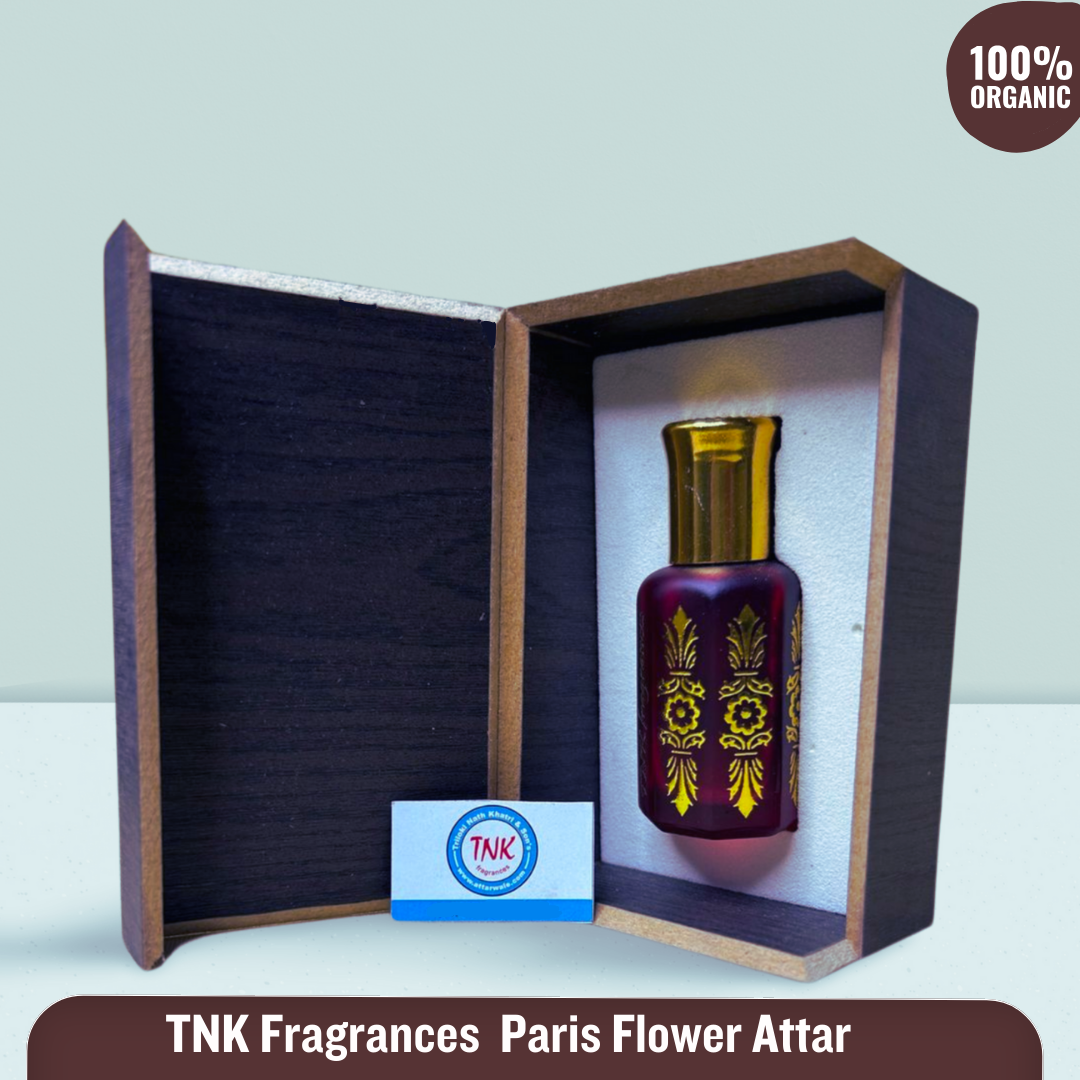In the realm of perfumery, few scents possess the mystique and allure of Oudh Attar. Derived from the resinous heartwood of the Aquilaria tree, this aromatic elixir has fascinated cultures across the globe for centuries. In this comprehensive exploration presented by TNK Fragrances, we delve deep into the history and origins of Oudh Attar, tracing its journey from ancient rituals to modern indulgences.
Ancient Beginnings
The Early Records
Oudh Attar’s roots can be traced back to ancient civilizations such as Egypt, India, and Arabia. In these early cultures, Oudh held sacred significance, often used in religious ceremonies and spiritual practices. References to Oudh can be found in ancient texts like the Vedas and the Bible, highlighting its esteemed status among ancient societies.
Cultural Significance
Oudh’s cultural significance transcends geographical boundaries, symbolizing luxury, spirituality, and status. In Arab cultures, Oudh is revered for its association with hospitality, tradition, and nobility. It finds its place in various cultural ceremonies, festivals, and rites of passage, symbolizing purity, prosperity, and divine blessings.
The Medieval Tapestry
Trade Routes and Exploration
During the medieval period, Oudh gained prominence along the Silk Road, a network of trade routes connecting the East and West. Travelers and explorers, including Marco Polo and Ibn Battuta, documented encounters with Oudh during their journeys, introducing it to new lands and cultures. Its exotic aroma captivated the senses of traders and merchants, fueling demand across distant lands.
Royal Endorsement
Oudh’s allure extended to royal courts and palaces, where it became a coveted treasure among monarchs and nobility. Kings and emperors prized Oudh for its exquisite fragrance and therapeutic properties, often commissioning perfumers to create bespoke blends for personal use. Its association with luxury and opulence further solidified its status as a symbol of prestige and power.
Renaissance and Revival
Industrialization and Commercialization
The advent of modern perfumery techniques in the 19th century revolutionized the production of Oudh Attar. Technological advancements in distillation and extraction methods enabled the mass production of Oudh-based fragrances, making it accessible to a wider audience. Commercialization led to the proliferation of Oudh products in the global market, fueling a resurgence of interest in its history and heritage.
Global Influence
Oudh’s influence transcended geographical boundaries, permeating literature, art, and media worldwide. Its exotic allure captivated the imagination of writers, poets, and artists, inspiring literary works, paintings, and sculptures. In contemporary perfumery, Oudh continues to captivate fragrance enthusiasts, with renowned perfumers incorporating it into their creations, blending tradition with innovation.
Modern Perspectives
Sustainable Practices
The growing demand for Oudh has raised concerns about sustainability and conservation. Overharvesting and illegal trade pose significant threats to the survival of the Aquilaria tree, prompting initiatives for sustainable cultivation and ethical harvesting practices. Collaborative efforts between governments, conservationists, and local communities aim to preserve the natural habitat of the Aquilaria tree while supporting livelihoods dependent on Oudh cultivation.
Artisanal Craftsmanship
Despite modern advancements, traditional methods of Oudh extraction and distillation continue to thrive. Artisanal perfumers uphold centuries-old techniques, paying homage to the craftsmanship and heritage of Oudh Attar. Their dedication to preserving ancient traditions ensures the authenticity and quality of Oudh products, enriching the olfactory landscape with their timeless creations.
Oudh Attar: A Cultural Kaleidoscope
Literary and Artistic Representations
Oudh’s enigmatic essence has inspired countless literary works, poetry, and folklore across cultures. Writers and poets have extolled its virtues, weaving tales of love, longing, and transcendence. In visual arts, Oudh’s evocative aroma finds expression in paintings, sculptures, and decorative arts, capturing the imagination of artists and connoisseurs alike.
Musical and Ceremonial Traditions
Music and dance have long been intertwined with the aromatic symphony of Oudh. From traditional melodies to contemporary compositions, Oudh’s fragrance permeates cultural performances, weddings, and spiritual gatherings. Its ceremonial use in rituals and ceremonies symbolizes purification, blessings, and the celebration of life’s milestones.
The Future of Oudh Attar
Innovations and Explorations
The future of Oudh Attar holds endless possibilities for innovation and exploration. Perfumers are experimenting with new blends and formulations, pushing the boundaries of olfactory creativity. The therapeutic potential of Oudh in aromatherapy and holistic wellness is being explored, offering new avenues for its application and appreciation.
Cultural Preservation
Preserving Oudh’s cultural heritage is paramount in safeguarding its legacy for future generations. Efforts to document indigenous knowledge, traditions, and practices ensure the continuity of Oudh culture amidst rapid globalization. Cross-cultural collaborations foster dialogue and mutual understanding, enriching the tapestry of Oudh’s cultural significance.
Explore Collection of Our Latest Oudh Attar:
Here are out top collection of Oudh Attar, Must Explore different Varities and add to card any of these and get it delivered to your doorsteps in few steps:
-
Product on saleTNK fragrances Combodian Oudh Attar – Standard Alcohol Free | No chemical spirit | Paraben Free | Long Lasting Unisex Attar | Roll on | Gifting pack₹699.00 – ₹2,299.00
-
Product on saleTNK fragrances Sandali Oudh Attar – Standard Alcohol Free | No chemical spirit | Paraben Free | Long Lasting Unisex Attar | Roll on | Gifting pack₹499.00 – ₹1,499.00
-
Product on saleTNK fragrances Musk Oudh Attar – Standard Alcohol Free | No chemical spirit | Paraben Free | Long Lasting Unisex Attar | Roll on | Gifting pack₹499.00 – ₹1,499.00
-
Product on saleTNK fragrances Vanilla Oudh Attar – Standard Alcohol Free | No chemical spirit | Paraben Free | Long Lasting Unisex Attar | Roll on | Gifting pack₹499.00 – ₹1,499.00
-
Product on saleTNK fragrances Rose Oudh Attar – Standard Alcohol Free | No chemical spirit | Paraben Free | Long Lasting Unisex Attar | Roll on | Gifting pack₹499.00 – ₹1,499.00
-
Product on saleTNK fragrances Musk Rizali Attar – Standard Alcohol Free | No chemical spirit | Paraben Free | Long Lasting Unisex Attar | Roll on | Gifting pack₹499.00 – ₹1,199.00
-
Product on saleTNK fragrances Amber Oudh Attar – Standard Alcohol Free | No chemical spirit | Paraben Free | Long Lasting Unisex Attar | Roll on | Gifting pack₹499.00 – ₹1,499.00
-
Product on saleTNK fragrances Dhoom Attar – Standard Alcohol Free | No chemical spirit | Paraben Free | Long Lasting Unisex Attar | Roll on | Gifting pack₹499.00 – ₹1,199.00
-
Product on saleTNK fragrances Mannat Attar – Standard Alcohol Free | No chemical spirit | Paraben Free | Long Lasting Unisex Attar | Roll on | Gifting pack₹499.00 – ₹1,499.00
Frequently Asked Questions (FAQs):
Q1: What is Oudh Attar?
A1: Oudh Attar, also known as Agarwood oil, is a fragrant oil derived from the resinous heartwood of the Aquilaria tree. It is highly prized for its rich, woody aroma and has been used for centuries in perfumery, religious rituals, and traditional medicine.
Q2: How is Oudh Attar made?
A2: Oudh Attar is typically obtained through a labor-intensive process of steam distillation or hydrodistillation of Agarwood chips or shavings. The resulting oil is then aged to enhance its fragrance and complexity before being blended into perfumes or used as a standalone fragrance.
Q3: What are the cultural significances of Oudh Attar?
A3: Oudh Attar holds significant cultural importance in various regions, symbolizing luxury, spirituality, and status. It is often used in religious ceremonies, cultural rituals, and traditional festivities as a symbol of purity, prosperity, and divine blessings.
Q4: Is Oudh Attar sustainable?
A4: Due to overharvesting and illegal trade, the Aquilaria tree, from which Oudh Attar is derived, is facing conservation challenges. However, efforts are being made to promote sustainable cultivation practices and ethical harvesting methods to preserve this precious resource for future generations.
Q5: How can I distinguish authentic Oudh Attar from synthetic alternatives?
A5: Authentic Oudh Attar is characterized by its rich, complex aroma, which evolves over time. When purchasing Oudh Attar, look for reputable sellers who provide detailed information about the source and extraction method. Additionally, authentic Oudh Attar tends to be more expensive than synthetic alternatives due to its rarity and labor -intensive production process.
Conclusion:
As we conclude our journey through the history and origins of Oudh Attar with TNK Fragrances, we are reminded of its enduring legacy and timeless appeal. From ancient rituals to modern indulgences, Oudh’s aromatic symphony continues to captivate hearts and minds across cultures and generations. As stewards of this precious heritage, TNK Fragrances invites you to celebrate and preserve the enigmatic essence of Oudh Attar for generations to come.


